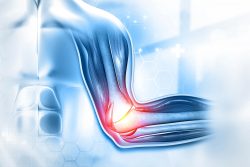 New research has identified how cells communicate to repair muscle damage. When a muscle is damaged, stem cells and immune cells work together to repair the damage. But how these cells interact to complete the removal process of dead tissue and make new muscle fibers had been a mystery. Scientists have discovered that hyaluranic acid is the essential molecule that contributes to this interaction.
New research has identified how cells communicate to repair muscle damage. When a muscle is damaged, stem cells and immune cells work together to repair the damage. But how these cells interact to complete the removal process of dead tissue and make new muscle fibers had been a mystery. Scientists have discovered that hyaluranic acid is the essential molecule that contributes to this interaction.
Hyaluranic acid is a natural substance and is currently used in beauty treatments and osteoarthritis injections. The new study shows it is the secret ingredient that communicates to muscle cells when to start repair. When muscle cells are damaged, it is critical for immune cells to rapidly enter the tissue to remove any damage so that stem cells can begin the repair process.
The research shows that the stem cells in muscles are prepared to begin repair instantly, but the immune cells keep the stem cells in a state of rest while they complete the cleanup job. This takes approximately 40 hours. Once this process is complete there is an internal alarm that wakes up the muscle stem cells and communicates to them to begin the repair process.
The damaged muscle stem cells must work in unison with immune cells to complete the process of repair. It is important for immune cells to quickly enter the tissue to remove the damage before stem cells can begin repair. When damage to muscles occur, stem cells begin coating and producing themselves with hyaluranic acid. When this coating is thick enough, it shuts down the immune cells sleep signal and wakes up the muscle stem cells.
From the use of human and mouse tissues, the team additionally discovered how stem cells in muscle control production of hyaluranic acid using epigenetic marks on the Has2 gene.
Aging is linked with muscle weakness, chronic inflammation, and a decreased ability of muscle stem cells to start the repair of any damage. If a way can be found to enhance the production of hyaluranic acid in the muscle stem cells of aged adults it might assist with repairing the muscle.
The team notes that the regenerative benefit of hyaluranic acid might depend on its production by the stem cells in the muscle. They are now examining drugs that can regulate the epigenetics of stem cells in muscle that may be used to increase the production of hyaluranic acid.
To view the original scientific study click below:
JMJD3 activated hyaluronan synthesis drives muscle regeneration in an inflammatory environment





